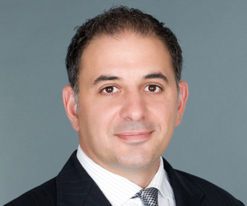Fascial Integrative Treatment (F.I.T.) is a highly successful, hands on treatment method that produces fast, sustained pain relief. F.I.T. is so effective because it addresses the root cause of the patient’s pain. Fascial and scar tissue adhesions that accumulate in the muscles and surrounding soft tissues of the body, including muscles, tendons, ligaments, nerves and fascia.
Fascial Integrative Treatment (F.I.T.)
Benefits of F.I.T.
By locating and treating the soft tissue adhesions, practitioners can:
- Break up restrictive adhesions
- Re-instate normal tissue flexibility
- Restore balance and stability to the injured area
An additional benefit of the F.I.T. technique is that it enables the provider to further assess and correct problems in other areas of the kinetic chain which are associated with movement compensations and are often contributing factors to the problem. This ensures that all the soft tissues that have become dysfunctional and are contributing to the specific injury are addressed, even if they have not yet developed pain.
What Injuries Does F.I.T. Treat?
Fascial Integrative Treatment (F.I.T.) has been known to fix injuries in 4 to 5 visits of 15 to 20 minute sessions. Here are some common injuries that F.I.T. has been known to heal.
The medial collateral ligament is a big ligament on the medial side of the knee. For more clinically relevant anatomy of the knee you can consult the physiopediapage ‘Knee’. The medial collateral ligament (MCL) is one of the four ligaments that are critical to maintain the mechanic stability of the knee joint. The ligamentous sleeve spans the entire medial side of the knee from the medial aspect of the extensor mechanism to the posterior aspect of the knee.
Soreness at the back of your heel caused by enthesitis is sometimes called Achilles’ tendonitis. This pain can make it hard for you to run or climb stairs. As the condition gets worse, it can make your tendons and ligaments thick, swollen, or hard, and that makes movement even more painful and difficult.
Knee Sprain. The knee is comprised of four major ligaments, the ACL (anterior cruciate ligament), PCL (posterior cruciate ligament), the MCL (medial collateral ligament) and LCL (lateral collateral ligament). … When one of these ligaments is injured, it is known as a knee sprain.
F.I.T. has been known to heal back pain. Back pain can make it difficult to sit down, stand up, or get comfortable to go to sleep. Whether you have pain, lower back pain or back and neck pain, dealing with it can make the day seem to drag on for ages – and the night, even longer. If you suffer from back pain, you’re not alone: back pain accounts for a large percentage of all missed workdays.
But the fact that something is common doesn’t mean it’s normal – pain is a signal that the body has reached its limit or has developed a problem, and just like traffic signals, this signal should be obeyed! People who suffer from constant back pain will try a variety of back pain remedies just to get some relief. F.I.T. get to the root of the problem and acts as fast, sustained pain relief.
Plantar fasciitis (PLAN-tur fas-e-I-tis) is one of the most common causes of heel pain. It involves inflammation of a thick band of tissue that runs across the bottom of your foot and connects your heel bone to your toes (plantar fascia).
Plantar fasciitis commonly causes stabbing pain that usually occurs with your first steps in the morning. As you get up and move more, the pain normally decreases, but it might return after long periods of standing or after rising from sitting.
Sciatica refers to pain that radiates along the path of the sciatic nerve, which branches from your lower back through your hips and buttocks and down each leg. Typically, sciatica affects only one side of your body.
Sciatica most commonly occurs when a herniated disk, bone spur on the spine or narrowing of the spine (spinal stenosis) compresses part of the nerve. This causes inflammation, pain and often some numbness in the affected leg.
Tennis elbow (lateral epicondylitis) is a painful condition that occurs when tendons in your elbow are overloaded, usually by repetitive motions of the wrist and arm.
Despite its name, athletes aren’t the only people who develop tennis elbow. People whose jobs feature the types of motions that can lead to tennis elbow include plumbers, painters, carpenters and butchers.
The pain of tennis elbow occurs primarily where the tendons of your forearm muscles attach to a bony bump on the outside of your elbow. Pain can also spread into your forearm and wrist.
A tension headache is the most common form of a primary headache. It happens intermittently in up to 80% of the population. As the symptoms are not as severe as a migraine, Tension Headache is only considered a problem if it becomes frequent or chronic.
Ankle sprain occurs when the strong ligaments that support the ankle stretch beyond their limits and tear. Ankle sprains are common injuries that occur among people of all ages. They range from mild to severe, depending upon how much damage there is to the ligaments.
Carpal tunnel syndrome is numbness, tingling, weakness, and other problems in your hand because of pressure on the median nerve in your wrist.
Frozen shoulder is a condition that affects your shoulder joint. It usually involves pain and stiffness that develops gradually, gets worse and then finally goes away. This can take anywhere from a year to 3 years.
Golfer’s elbow is a condition that causes pain where the tendons of your forearm muscles attach to the bony bump on the inside of your elbow. The pain might spread into your forearm and wrist.
Golfer’s elbow is similar to tennis elbow, which occurs on the outside of the elbow. It’s not limited to golfers. Tennis players and others who repeatedly use their wrists or clench their fingers also can develop golfer’s elbow.
The pain of golfer’s elbow doesn’t have to keep you off the course or away from your favorite activities. Rest and appropriate treatment can get you back into the swing of things.
The rotator cuff is a group of muscles and tendons that surround the shoulder joint, keeping the head of your upper arm bone firmly within the shallow socket of the shoulder. A rotator cuff injury can cause a dull ache in the shoulder, which often worsens when you try to sleep on the involved side.
Rotator cuff injuries occur most often in people who repeatedly perform overhead motions in their jobs or sports. Examples include painters, carpenters, and people who play baseball or tennis. The risk of rotator cuff injury also increases with age.
Osgood-Schlatter disease can cause a painful, bony bump on the shinbone just below the knee. It usually occurs in children and adolescents experiencing growth spurts during puberty.
Osgood-Schlatter disease occurs most often in children who participate in sports that involve running, jumping and swift changes of direction — such as soccer, basketball, figure skating and ballet.
While the condition was once more common in boys, the gender gap has narrowed as more girls have become involved with sports.
Osgood-Schlatter disease typically occurs in boys ages 12 to 14 and girls ages 10 to 13. The difference is because girls enter puberty earlier than do boys. The condition usually resolves on its own, once the child’s bones stop growing.
Thoracic outlet syndrome is a group of disorders that occur when blood vessels or nerves in the space between your collarbone and your first rib (thoracic outlet) are compressed. This can cause pain in your shoulders and neck and numbness in your fingers.
Common causes of thoracic outlet syndrome include physical trauma from a car accident, repetitive injuries from job- or sports-related activities, certain anatomical defects (such as having an extra rib), and pregnancy. Sometimes doctors can’t determine the cause of thoracic outlet syndrome.
Treatment for thoracic outlet syndrome usually involves physical therapy and pain relief measures. Most people improve with these approaches. In some cases, however, your doctor may recommend surgery.
Turf toe is a sprain of the big toe joint resulting from injury during sports activities. The injury usually results from excessive upward bending of the big toe joint. The condition can be caused from either jamming the toe or from repetitive injury when pushing off repeatedly when running or jumping.
A hamstring strain or pulled hamstring is felt as a sudden sharp pain at the back of the thigh. Treatment involves immediate first aid of rest, ice and compression followed by a full rehabilitation and exercise program.
Symptoms of a hamstring strain include a sudden sharp pain at the back of the thigh usually whilst sprinting or a fast stretching movement or high kick. Hamstring strains are graded 1, 2 or 3 depending on how bad they are. A grade 1 injury may only be a slight twinge whilst a grade 3 can result in the athlete being unable walk with swelling and bruising developing soon after.
Hip and pelvis injuries represent 2-5% of all sports injuries. Among these injuries, groin pain is the most common finding. The most common sports-related injuries in the hip, pelvis, and thigh area are musculotendinous, (eg, quadriceps strain, adductor tendinitis) and, less commonly, iliopsoas tendinitis. Iliopsoas tendinitis and iliopsoas bursitis are closely interrelated because inflammation of one inevitably causes inflammation of the other, due to their close proximity. Therefore, these 2 conditions are essentially identical in terms of presentation and management.
Iliotibial Band Syndrome (ITBS) is one of the most common overuse injuries among runners. It occurs when the iliotibial band, the ligament that runs down the outside of the thigh from the hip to the shin, is tight or inflamed. The IT band attaches to the knee and helps stabilize and move the joint. When the IT band isn’t working properly, movement of the knee (and, therefore, running) becomes painful. IT band pain can be severe enough to completely sideline a runner for weeks, or even longer.
Patellar tendinitis is an injury to the tendon connecting your kneecap (patella) to your shinbone. The patellar tendon works with the muscles at the front of your thigh to extend your knee so you can kick, run and jump.
Patellar tendinitis, also known as jumper’s knee, is most common in athletes whose sports involve frequent jumping — such as basketball and volleyball. However, even people who don’t participate in jumping sports can get patellar tendinitis.
For most people, treatment of patellar tendinitis begins with physical therapy to stretch and strengthen the muscles around the knee.
The term “shin splints” refers to pain along the shin bone (tibia) — the large bone in the front of your lower leg. Shin splints are common in runners, dancers and military recruits.
Medically known as medial tibial stress syndrome, shin splints often occur in athletes who have recently intensified or changed their training routines. The increased activity overworks the muscles, tendons and bone tissue.
Most cases of shin splints can be treated with rest, ice and other self-care measures. Wearing proper footwear and modifying your exercise routine can help prevent shin splints from recurring.
Signs and symptoms of TMJ disorders may include:
- Pain or tenderness of your jaw
- Pain in one or both of the temporomandibular joints
- Aching pain in and around your ear
- Difficulty chewing or pain while chewing
- Aching facial pain
- Locking of the joint, making it difficult to open or close your mouth
Whiplash is a neck injury due to forceful, rapid back-and-forth movement of the neck, like the cracking of a whip. Whiplash most often occurs during a rear-end auto accident, but the injury can also result from a sports accident, physical abuse or other trauma.
Common signs and symptoms of whiplash include neck pain, stiffness and headaches. Most people with whiplash recover within a few months after a course of pain medication, exercise and other treatments. Some people experience chronic neck pain and other ongoing complications.
Whiplash may be called a neck sprain or strain, but these terms also include other types of neck injuries.
-
Lillian Occupational Nurse International Aerospace Company
-
Tom Business Development Manager Commercial Real Estate
-
Christina Executive Administration
-
Brenda Risk Manager Orange County Casino
-
Suzanne Office Administrator
-
Martin District Manager Supermarket Chain
-
Heather HR Director Food Manufacturer
Give us 15 minutes and we just may change your organization forever!
Meet Our Team

Dr. Vasili Gatsinaris
Founder/CEO

Timothy O’Brien
Chief Operating Officer

Richard P. Cucullu
Chief Administrative Officer